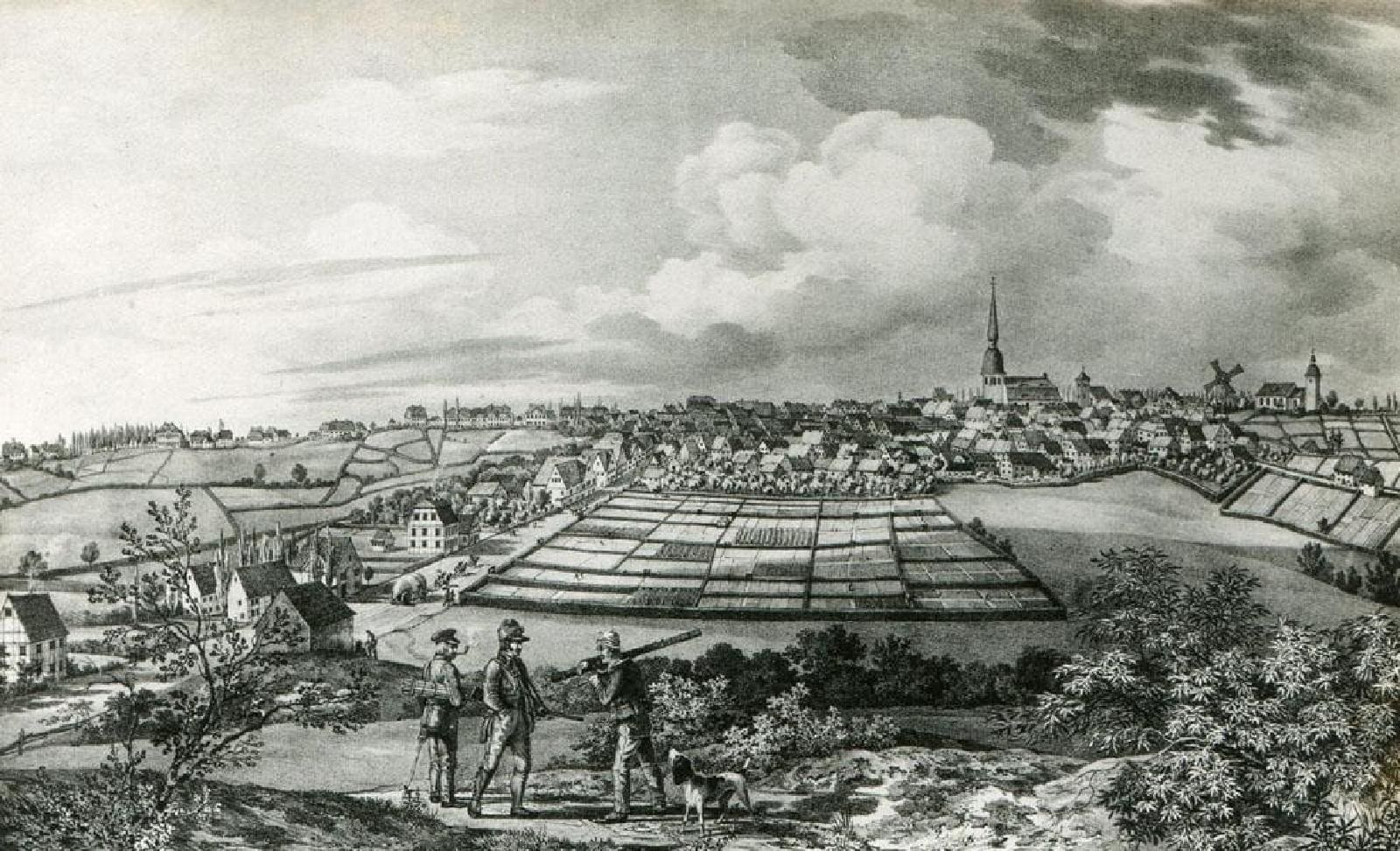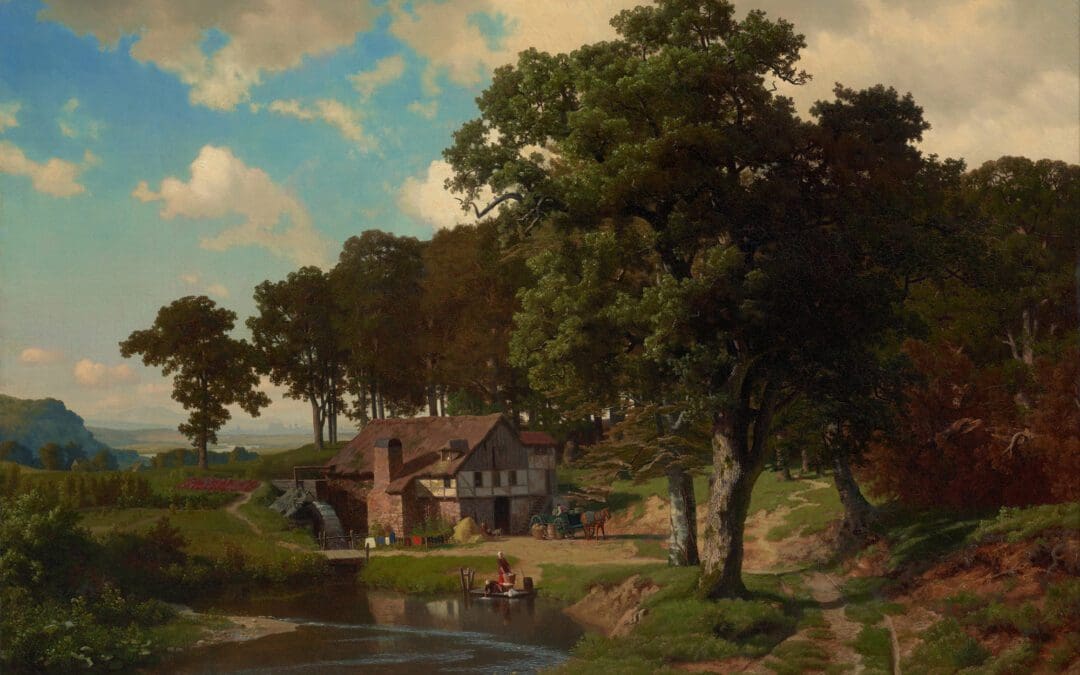Albert Bierstadt: The Evolution of a Landscape Painting Legend
Albert Bierstadt, born on January 7, 1830, in Solingen, Prussia, was the sixth offspring of Henry and Christina Bierstadt. The family relocated to the United States in 1832, settling in New Bedford, Massachusetts. This move was partly to avoid military conscription and also in pursuit of better economic prospects. In New Bedford, a bustling hub for the whaling industry, Henry Bierstadt, leveraging his skills as a cooper, found a stable livelihood.

An 1829 lithograph of Solingen, Germany, the birthplace of Albert Bierstadt.
Albert’s upbringing in New Bedford coincided with the prosperous era of Yankee whaling. His formative years are somewhat enigmatic, with records indicating he attended local schools and possibly worked at Shaw’s Frame Factory. Despite an early inclination towards art, no early signs of extraordinary talent were reported by his family. Overcoming familial skepticism and a lack of inherent talent, Albert was adamant about pursuing a career in art. He embarked on this path by self-learning the basics of drawing, offering drawing lessons in New Bedford, Newport, and Boston, and supplementing his income by showing magic-lantern slides across New England. His savings eventually enabled him to travel to Düsseldorf, aiming to study under Johann Peter Hasenclever, a renowned artist and distant relative.
Bierstadt’s plans took a turn upon reaching Düsseldorf and finding that Hasenclever had passed away. He found guidance and support from American artists Emanuel Leutze and Worthington Whittredge. Initially intending to study under Andreas Achenbach, Bierstadt faced rejection due to his inadequate drawing skills, a fact even acknowledged by Whittredge and Leutze, who dissuaded him from approaching Achenbach by falsely claiming he did not accept students. Despite these setbacks and facing discouragement due to his insufficient drawing skills, Bierstadt remained undeterred. He embraced the mentorship of American artists and the rich artistic environment in Düsseldorf, rapidly advancing his skills.
His artistic journey led him to travel with Whittredge and other artists through the Rhine and into Switzerland in June 1856. The majestic Alpine landscapes captivated Bierstadt, foreshadowing the impact the Rockies and Sierra Nevada would later have on his work. Afterward, he spent the winter of 1856-57 in Rome and explored Naples and Capri with Sanford Robinson Gifford in the spring, further enriching his artistic repertoire.
Bierstadt returned to New Bedford in September 1857, nearly four years after his departure for Europe. He quickly began teaching oil painting and, by the following summer, had organized New Bedford’s first significant art exhibition, featuring works by European masters like Andreas Achenbach, American pioneers like Thomas Cole, and a major piece by Leutze, alongside fourteen of his own creations. Despite the exhibition’s critical acclaim, it was not a financial success, and his efforts to establish a local art association were futile.
However, Bierstadt found considerable success in selling his work. His exhibition debut at the National Academy of Design in April 1858 was followed by significant sales: “Lake Lucerne (Switzerland)” fetched $925 from Alvin Adams, a prosperous Boston businessman, and “The Arch of Octavius (The Roman Fish Market), 1858” sold for $400 to the Boston Athenaeum. Within eighteen months of his return, Bierstadt reported selling nearly $4,000 worth of paintings (equivalent to approximately $150,000 today), a testament to his remarkable transformation from a “timid, awkward, unpolished specimen of a Yankee” to a refined, technically proficient, and socially adept artist by 1859, less than six years after embarking for Germany.

